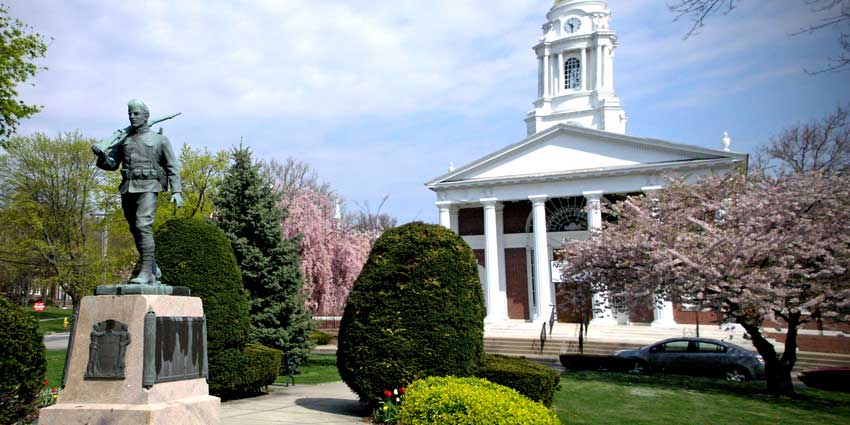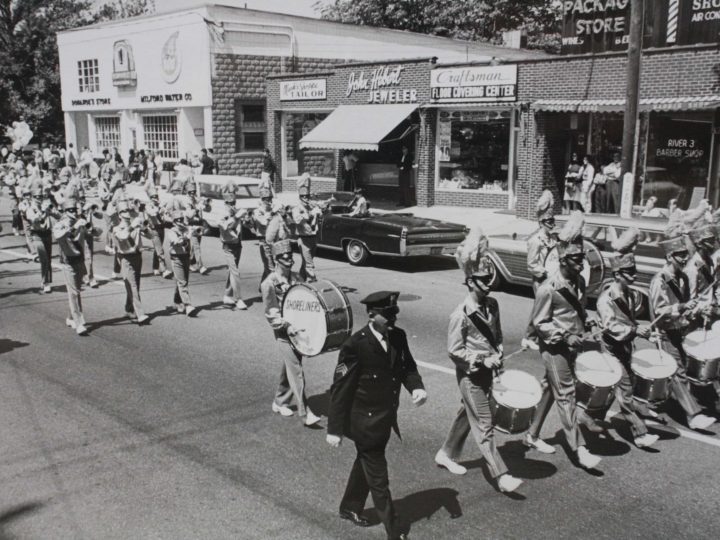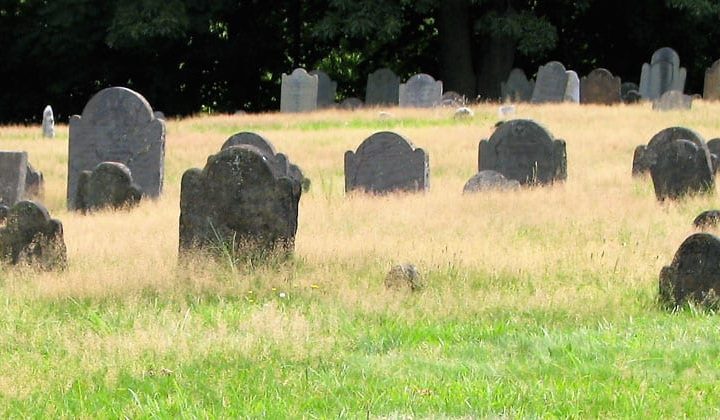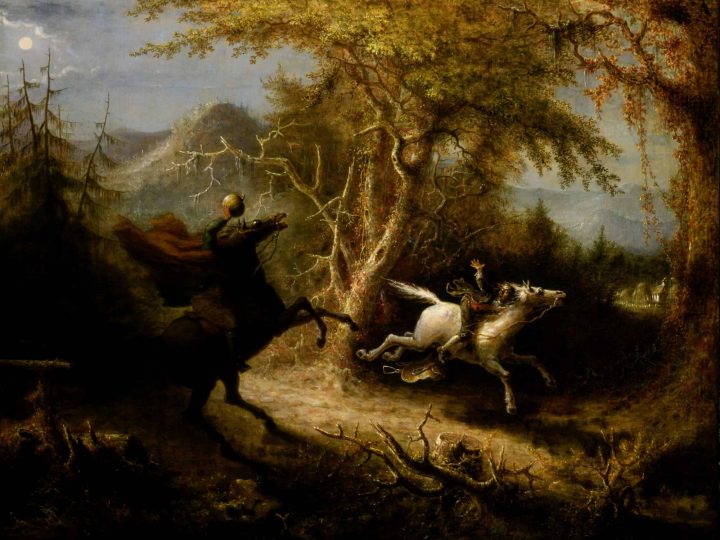
A town hall is more than a building; it’s the center and foundation for a community. Such was the case for Milford’s first meetinghouse, which was located on a shallow hill near the corner of Broad and River Streets at approximately the site of today’s Bistro Basque. On November 24, 1640 the original town settlers directed the five judges of Milford “to set out a meeting house thirty feet square, after such manner as they should judge most convenient for the public good.”
The original post-and-beam “common house” was prefabricated in New Haven, circa 1641, and shipped to Milford where it was assembled. It was soon too small for all its duties. Town and church services moved nearby in 1645 to a square “East Towne House” two stories high with a sharp roof and, on the top, a turret where a sentry could stand and look out for Indians and where a drum was beat to call people together for Sabbaths and town meeting days. Though serving both sacred and secular duty the first meetinghouse had no bell. The old Common House became a guard quarters and eventually a warehouse.
In time, the First Meetinghouse site (replacement buildings built in 1734 when the original burned down due to drunken British Soldiers during the winter of 1757-8, and again in 1760—at a cost of 50 Pounds—were most likely also on or near this site) was turned over to the Methodist Church when town duties were moved to the site of the current Town Hall triangle flanked by the Wepawaug and the two River Streets. Prior to the relocation a small schoolhouse to the west and the old Baptist Church on the east occupied the site. About 1832 these two small buildings were joined together by a grand, two-story colonnaded structure.
City business was carried out on the first floor; the school occupied the west end and the second floor, the town clerk and the records vault was in the old Baptist Church, while the GAR rooms were on the second floor center. On February 18, 1915 it was all lost when a fire broke out. As the town’s first fire truck—a 1910 model—pulled up, gentlemen of the Milford Club meeting above the drug store on River Street were prying open the fire hydrant. Pushing the wrong way, their lever broke and they fell into a mud puddle. They survived but the building didn’t.
Shortly after the fire, a design was called for to replace the heart of Milford. A Federal-style single floor structure was chosen and its cornerstone laid in June 1916 and completed in the fall of 1917. The beauty of the location was enhanced as the mills and stables situated on the Wepawaug River had in recent years been torn down. It was, upon completion, one of the most scenic town halls anywhere.
Built of red brick with contrasting white decorative moldings and large columns in front and an impressive gold-leafed dome on its spire, it had the innate balance of Federalist design without the heaviness of Georgian or baroque touches often found in other civic buildings of the day. During construction, the Giant Rodman Gun that stood before the hall (approximately where the WWI memorial stands now) was moved to the Milford Green. (A similar gun stands in East Haven today; Milford’s was lost to a WWII scrap drive).
Upon completion, the town clerk offices occupied the west side of the building as the school was moved to the new “Yellow Brick Building” on the hill to the west (today the River Park Apartments). The administration took the east side though no mayor occupied the building until 1959. The central meeting hall had plenty of room for the earlier representative town government to meet with a semi-circular balcony for the overflow. A stage was available for displays of civic acting, musical talent, and oratory. A clock tower of equally elegant design capped the building with a gold dome. Underneath, the tax collector held sway on the west side and public works operated out of the east where a basement level entrance still stands. The small police force was also located here for a time.
People still came to the town hall to pay their taxes until June 1982 when a massive storm dumped over 12 inches of rain in just a few hours (the storm was the worst since the late 1800s.) Tax records were lifted up and bills were plastered to the iron fencing in front of St. Peter’s Church. Taxpayer joy was, unfortunately, short-lived. After the flood most of the municipal activity was moved from the Town Hall to the re-purposed Milford High School, now the Parson Complex, named for city treasure Thomas Parson. Only the mayor’s offices and city attorney remain.
The Town Hall underwent a serious upgrade and rehabilitation during the 1980s. Intricate carvings were restored––to natural wood finishes. Paintings and photos adorn the walls highlighting Milford scenes and past “worthy citizens.” The grounds around the City Hall house some poignant messages as well; a small garden in the back overlooking the river memorializes people whose contributions made them “Milford’s treasures.” Memories too are kept by the WWI soldier who will forever stride across the Town Hall’s front lawn and the 911 memorial for Americans from Milford who lost their lives to terror.
In 2013-15 the roofing and clock tower were extensively refit although the battle to keep the clock running on time has been fought for many, many years (at its worst, it was still always right at least twice a day, better than some who have worked there in the past).
The year’s celebration of the building’s 100th anniversary began in February with a bonfire that paid homage to the blaze that destroyed the previous building. Additional family-friendly events are planned for the big anniversary on June 17, 2016.




